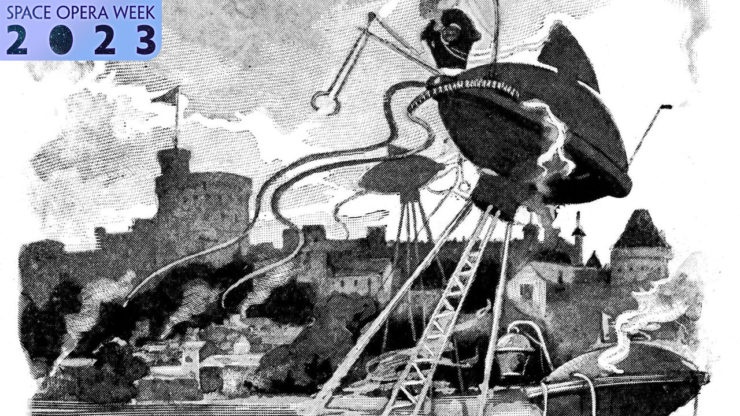There cannot be many heads of state who have not looked at maps and wondered if these were the best borders possible. Nations as vast as Canada could always be a bit vaster (here a Detroit, there a Maine). This applies to space empires as well: even a polity that spans a considerable fraction of the galaxy might believe it deserves to be even larger.
Such expansion is often unwelcome and resisted with force by governments and citizens alike. When SF authors write about wars of conquest and the resistance thereunto on galactic scales, the resulting works are generally considered to be part of the space opera genre. If by some odd chance you have not read any such space operas, you might want to sample the following five classics…
The Lensmen Series by Edward E. “Doc” Smith
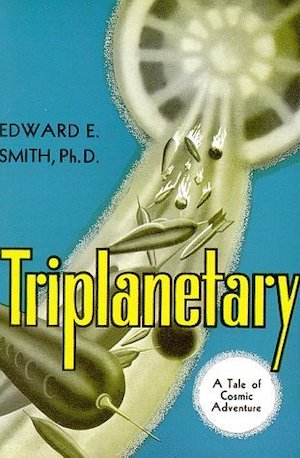
Comprised of six novels—Triplanetary (1948), First Lensman (1950) Galactic Patrol (1950), Gray Lensman (1951), Second Stage Lensmen (1953), and Children of the Lens (1954)—the Lensman series pits Arisians against Eddorians. Of equal antiquity, the two sides are polar opposites. The Arisians are paragons of cosmic virtue, while the Eddorians value only power and cruelty. They are all-round poor neighbors. The Arisians are aware of the Eddorians, but Eddorians have no idea that the Arisians exist.
Direct war would result in mutual extermination. The Arisians therefore set in motion a billion-year breeding program. Across the two populated galaxies, eugenically cultivated civilizations rise, then merge into one Civilization. To Eddore, Civilization looks like prey. As the rapidly escalating war that ensues proves, Eddorians have made a terrible, and ultimately fatal, miscalculation.
If you’ve ever set down a book and thought, “Well, it’s nice that Elizabeth and Darcy finally married, but couldn’t Miss Austen have included some coruscating beams of unfathomable power or at least one planetary-scale apocalypse?” Doc Smith has your back. The Lensman books start the cosmic conflict at 11, then rapidly escalate from there.
The Star Fox by Poul Anderson (1965)
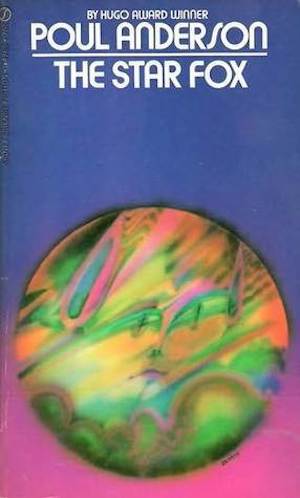
Ancient Aleriona has a simple dream. It would like humanity to get off its lawn. Human expansion into galactic space is an unforgivable affront to Aleriona. The aliens start things off by annexing a single human colony world, New Europe.
Every journey begins with a single step.
Earth having only narrowly escaped nuclear self-destruction, pacifism is the governing ethos. Believing that all the colonists died in the alien attack, Earth will not start a war of vengeance. Gunnar Heim, on the other hand, not only has good reason to believe that there are survivors in New Europe, he has the personal resources to fund a private military expedition…if the governments of Earth do not find some way to stop him.
Readers of a certain age might think this book is really about the Vietnam War. In fact, it is totally about the Vietnam War. It argues that misguided pacifism is an ongoing existential threat! Anderson was famously one of the authors who signed one of the dueling petitions in Galaxy. Note which side of the petition he signed.
Readers too young to remember the Vietnam War may focus instead on the same detail that bothered me as a teen. While it is perfectly reasonable to expect that the star ship at the centre of a novel called The Star Fox would be called Star Fox, the ship is actually called Fox II. There was a starship called the Star Fox, but it does not appear in this book (or as far as I know, any other book by Anderson).
The Faded Sun Trilogy by C. J. Cherryh (1978–1979)
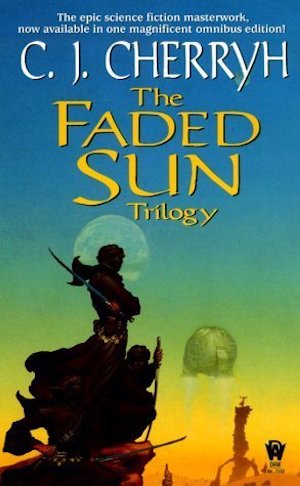
The trilogy—originally published as The Faded Sun: Kesrith (1978), The Faded Sun: Shon’jir (1978), and The Faded Sun: Kutath (1979)—begins as a dream of conquest dies. The alien Regul, having lost a bid to annex human-controlled worlds, take their frustrations out on their mercenary hirelings. Rather than allow the warlike mri to switch alliances and work for the Federation (something the mri do not appear to be considering), the Regul decide it would be more prudent to simply exterminate the thirteen surviving mri.
This scheme does not end well. Eleven mri die, but Niun and his sister Melein escape the slaughter. Worse from the Regul perspective, the two mri and their human ally Sten Duncan are allowed to flee into deepest space, armed with an ancient star map. The Regul didn’t get where they are by letting well enough alone: a fleet sets out to erase evidence of an embarrassing moment in Regul history. It’s a bold decision that provides many learning experiences.
I have read suggestions that this series was Cherryh’s response on Dune’s take on interstellar conquest. I don’t know if that is true, but it’s certainly plausible and an interesting way to look at the series.
Shards of Honor by Lois McMaster Bujold (1986)
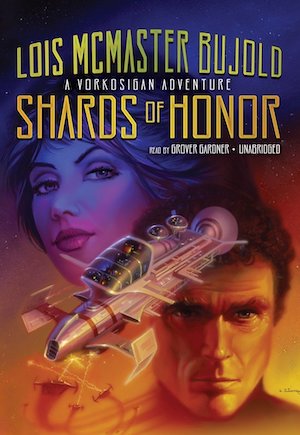
Venturing through a newly discovered wormhole, Betan scouts discover a habitable world new to Beta. Close on the heels of that revelation, the Betans learn that rival power Barrayar has already claimed the new world and does not desire Betan tourists. In the violence that follows, most of the surviving Betans flee into space while Cordelia Naismith is taken prisoner.
Centuries of isolation followed by an attempted conquest by galactic imperialists have left the Barrayarans an abrasive lot. Nevertheless, what’s true of a planetary population as a whole is not necessarily true of individuals. Cordelia finds much to admire in Aral Vorkosigan and he in her. Cue an interplanetary romance! One that could not be more badly timed, as a sociopath, Crown Prince Serg, leads Barrayar towards an ill-considered war.
I’d like to say that Crown Prince Serg is an exceptional case by which the Barrayaran system of government should not be judged, except that other works in the series suggest that people like Serg are not as rare as one would hope. Barrayar’s culture favours overconfident authoritarians. On the plus side, this tendency means that there’s ample room for political reform, as it’s hard to do worse than Serg.
Consider Phlebas by Iain M. Banks (1987)
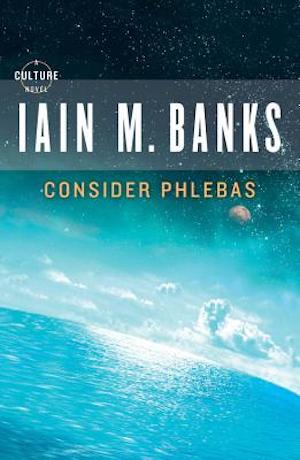
The Culture is a star-spanning anarchy run by super-intelligent Minds, seducing hapless alien civilizations with promises of individual freedom and consequence-free hedonism (promises that the Minds keep). Among those brave visionaries who resist the Culture, the Idirans. The Idirans prefer repressive religion, entrenched bigotry, and relentless war on those who disagree. The Culture is a loathed enemy.
Shapeshifter Horza is certain that artificial intelligences such as the Minds are the enemy of real life. The Idirans may be loathsome, but they are alive. Therefore, Horza allied with the Idirans. This is terribly convenient for the Idirans: they can use Horza to collect a Mind that has crash-landed on a planet interdicted by powers the Idirans cannot afford to provoke. Horza’s people are allowed access. Therefore, Horza can capture the marooned Mind without provoking the planet’s guardians. That’s the plan, anyway. What happens will be very different.
“Wait,” you ask, “won’t the Idirans inevitably turn on Horza’s people for the crime of not being Idiran? Isn’t it exceedingly stupid for any non-Idiran to ally with the Idirans?” That may seem at first glance to be the case but on closer examination…the Idirans will do exactly that, given a chance. In Horza’s defense, he makes terrible life choices.
***
Space opera being popular and military SF equally so, it is no surprise these five works about cosmic aggression are a very small sample of a very large field. No doubt many of you have favourites that are not mentioned above. If so, comments are, as ever, below.
In the words of fanfiction author Musty181, four-time Hugo finalist, prolific book reviewer, and perennial Darwin Award nominee James Davis Nicoll “looks like a default mii with glasses.” His work has appeared in Interzone, Publishers Weekly and Romantic Times as well as on his own websites, James Nicoll Reviews (where he is assisted by editor Karen Lofstrom and web person Adrienne L. Travis) and the 2021 and 2022 Aurora Award finalist Young People Read Old SFF (where he is assisted by web person Adrienne L. Travis). His Patreon can be found here.










